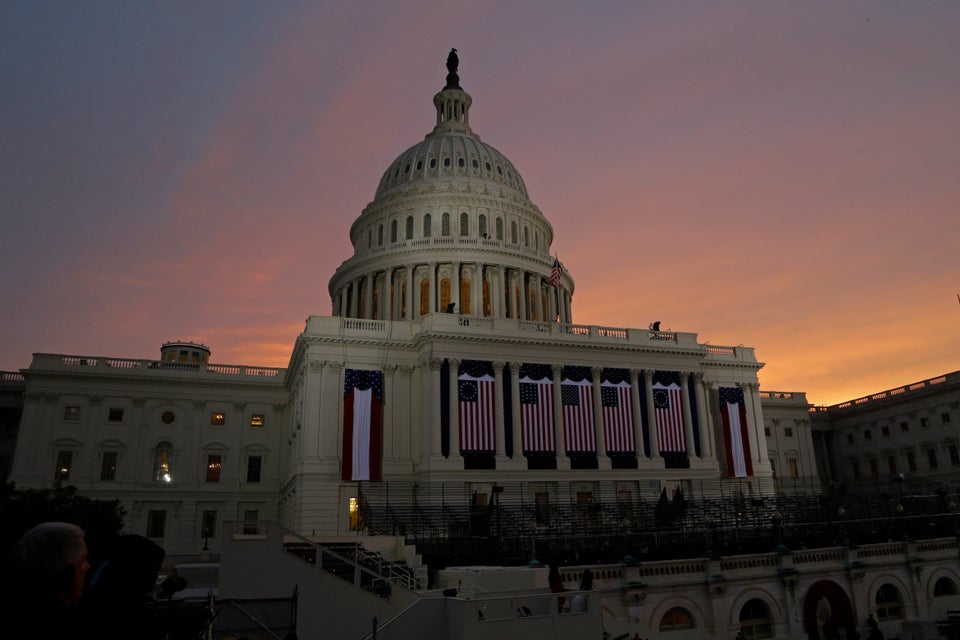
WASHINGTON -- Currently sitting in southwestern Afghanistan is a 64,000-square-foot military complex that commanders say they never wanted and haven't used. It cost taxpayers nearly $36 million to build and has become a "white elephant" that the Afghan government may not be able to use once U.S. forces withdraw.
In 2010, a year after the project was conceived for Camp Leatherneck, the top Marine military commander in the area, then-Maj. Gen. Richard Mills, said he didn't want it to be constructed. Instead, he requested that a complex half its size be built.
He was overruled, however, by a top Army commander, whom The Washington Post identified Wednesday as Lt. Gen Peter Vangjel. A newly released Army investigation absolves Vangjel of any wrongdoing, finding he was justified in refusing to cancel the project in 2010.
Vangjel was subsequently promoted to three-star general and took over in 2011 as the Army's inspector general, tasked with rooting out waste, fraud and abuse.
In 2010, Mills determined that the large headquarters "was no longer necessary to execute the mission." But the Army investigation found that Vangjel acted appropriately because building the complex was in line with U.S. Central Command's "strategic vision" at the time, which considered the headquarters "vital for the enduring presence in Afghanistan."
Mills' successors did not take up his request to stop construction, instead seeking more amenities like video equipment and new furniture.
"The investigation into the construction and use of a new Command and Control facility at Camp Leatherneck determined that US Forces-Afghanistan followed established military construction contracting procedures to identify a requirement, justify the cost, request the funds and validate the project," Air Force Col. Patrick Ryder, a spokesman for U.S. Central Command, said in a statement to The Huffington Post. "The investigation found no violation of the law in requesting, validating and constructing the 64,000-square foot facility at Camp Leatherneck, nor was there any finding of fraud, misrepresentation, or improper action."
The new report also advises spending even more money on the facility, recommending that construction be completed and service members move in as originally intended -- even though it may be vacated or demolished once the U.S. withdraws from Afghanistan.
"The final disposition of the facility remains undetermined but its long-term use has not been ruled out," Ryder added.
According to The Washington Post, the findings have appalled some senior military officers.
"The Army built us an enormous white elephant, and now, to save face, we're being told to waste more money and time to move into it," said one senior Marine officer.
The Camp Leatherneck facility also caught the attention of Special Inspector General for Afghanistan Reconstruction John Sopko in July. In a letter to Defense Secretary Chuck Hagel, Sopko called it a "potentially troubling example of waste that requires your immediate attention." From his findings:
I was told by senior U.S. military officials that the recently completed Regional Command-Southwest (RC-SW) Command and Control Facility, a 64,000 square feet building and related infrastructure with a contract award value of $34 million that was meant to serve as a command headquarters in Helmand to support the surge, will not be occupied. Based on documents provided to SIGAR, it appears that military commanders in Afghanistan determined as early as May 2010 that there was no need for the facility, yet the military still moved ahead with the construction project and continued to purchase equipment and make various improvements to the building in early 2013. Based on these preliminary findings, I am deeply troubled that the military may have spent taxpayer funds on a construction project that should have been stopped.
A major problem with the facility at this point, as The Washington Post laid out, is that it's unlikely Camp Leatherneck will be open a year from now when U.S. troops withdraw. And even if President Barack Obama does choose to keep some troops there, they "would not require such a large and opulent headquarters, senior Marine officers said."
Sopko also noted in his report that the building may end up being located outside the security perimeter as the U.S. footprint there decreases, "making it unsafe for the U.S. military to occupy it." That would leave only two options: demolishing the complex or giving it to the Afghan government:
However, to make it usable for the Afghan government, the building would require a major overhaul of existing systems, including the expensive heating, ventilation, and air conditioning systems. A high-ranking, senior U.S. military official also advised me that the facility was built to U.S. construction standards rather than Afghan standards. For example, the power runs at U.S. 60 cycles versus Afghan 50 cycles and U.S. 120 volts versus Afghan 220 volts. Therefore, it would not be easy to transfer the building to the Afghan government. These were some of the reasons why the U.S. military officials we spoke with believe the building will probably be demolished.
Sen. Claire McCaskill (D-Mo.), who has made oversight in Afghanistan one of her signature issues, told The Washington Post that she was "skeptical that throwing more money at this facility is going to serve our national security interest in any way."

